#camilo josé cela
Text

“La liberté est une sensation. On peut parfois l'atteindre, enfermé dans une cage comme un oiseau.”
Camilo José Cela
Gif de Oamul Lu
#gif animé#oamul lu#cage à oiseaux#balançoire#summer#été#liberté#quotes#camilo josé cela#humour#nature#fidjie fidjie
41 notes
·
View notes
Text

Camilo José Cela
#suitdaddy#suiteddaddy#suit and tie#suited daddy#daddy#men in suits#silverfox#three piece suit#waistcoat#suited men#suited grandpa#suitedman#suit daddy#suited man#buisness suit#suitedmen#authors#spanish man#spanish men#Camilo José Cela
11 notes
·
View notes
Text
Lanzarote

Lanzerote, Arrecife, -Eglesia San Ginés
Das Wunder des Lichts
César Manrique, der Inselarchitekt

César Manrique, der Inselarchitekt
Ohne ihn läuft hier nichts. Sogar die Kunstwerke, die von Jesús Soto, Paco Curbelo oder José Saramago stammen, sind von César Manrique. In welcher seiner vielen Sprachen er sich auch ausdrückte, Malerei, Architektur, Bildhauerei, Poesie, Gartengestaltung oder Stadtplanung, der Wille, seine Heimat zu einer grandiosen Neuschöpfung aus Kunst und Natur zu formen, bestimmte das Leben des Inselarchitekten. Die „totale Kunst“ bestimmte seinen Anspruch, (äußere) Schönheit mit (innerer) Ruhe in Einklang zu bringen. Dass dabei sein Hang zu Society und Jetset nicht auf der Strecke blieb, lässt sich aus jedem seiner grandiosen Land-Art-Werke herauslesen. Wer war der Wunderknabe, und wie baute er Macht, Kunst und Einfluss auf? Der Devisenbringer ist aus Lanzarote ebenso wenig wegzudenken, wie Lava und Licht. Der vielseitig Begabte machte sich beides zu nutze. Ob in den abstrakten Gemälden, den omnipräsenten, farbenfrohen Skulpturen, die sich mit oder gegen den Wind drehen, und die Straßen ebenso prägen wie die aufsehenerregenden architektonischen Entwürfe – seine Arbeiten verherrlichen die Schönheit der Insel, ihre schroffe Aristokratie und ihre von Feuer und Vulkangestein geprägte Landschaft.



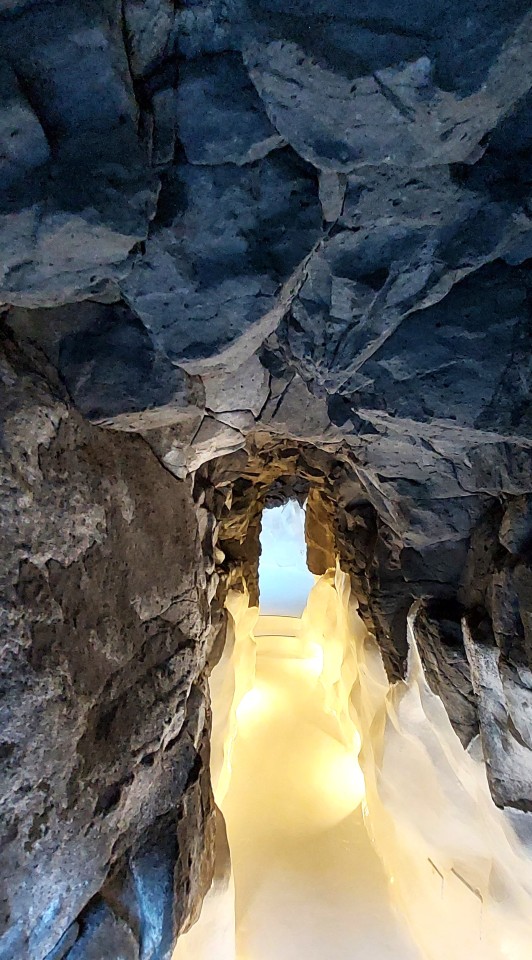
Fondacion Manrique
César Manrique war Visionär, Diktator und Lebenskünstler, er war Andy Warhol, Fidel Castro und Gunther Sachs in einer Person. Ob Gärten, Museen, Villen, Restaurants, Aussichtswarten, Windspiele oder Landschaftsskulpturen, Manrique hat die Insel geprägt. Wer hat seinen Landsleuten schon den Farbton ihrer Häuser vorgeschrieben. Die Farben Weiß und das spezielle „Manrique-Grün“ gehören zum gesamtheitlichen Konzept. Und die Bewohner, sie ließen sich’s gefallen. Kaum ein Land wurde so nachhaltig von einem Künstler entworfen und geformt, wie Lanzarote, und – der Geniestreich ist gelungen. Es gibt wohl niemanden, der dem widerspricht. Da verwundert es auch nicht, dass sogar der Flughafen den Namen „César Manrique“ trägt. Kaum, dass der glitzernde Ferienvogel den Boden der Insel berührt, werden die Passagiere darauf hingewiesen, in wessen Hand sie sich befinden. Und wenn wir schon beim „Verkehr“ sind: Auf den Straßen fahren Autos, deren Lackierung eines der knallbunten Gemälde aus des Meisters Werkstatt zeigt…
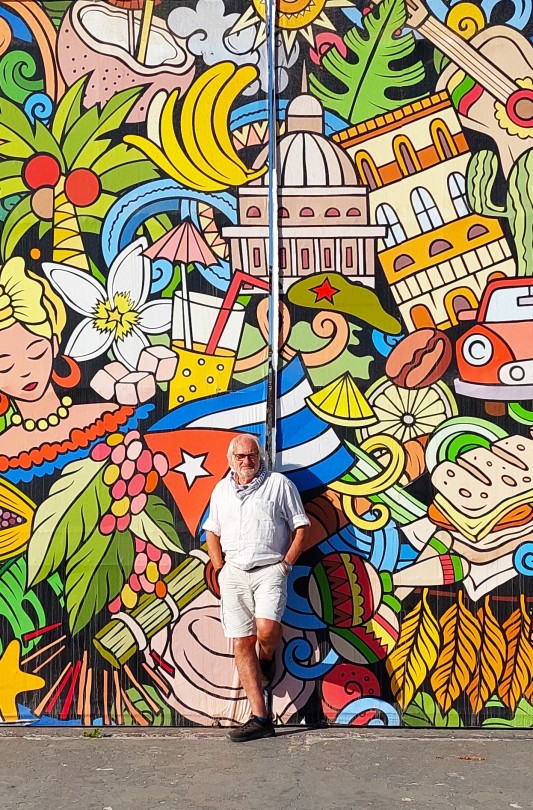
Arrecife, Autor im Bild
Der Insel-Genius hat mehr erreicht, als je ein Künstler vor ihm. Blickt man auf die wild zerklüftete Küste bei El Golfo oder auf die pittoreske Mischung zwischen dem omnipräsenten schwarzen Lavagestein und dem teilweise aufgeschütteten weißen Sand der Strände – vermutet man sogar hier die Handschrift Manriques. Auch in Sachen Ökologie, Stadtarchitektur und Umweltpolitik stößt man auf seine Einflussnahme. Werbetafeln in- oder ausländischer Konzerne sucht man auf der Insel vergeblich - was einem gar nicht sofort auffällt – genau wie das gänzliche Fehlen von Touristen-Hochburgen oder anderen nicht mehr wieder gut zu machenden Bausünden. Der weitgreifende Kunstanspruch des Ausnahmekünstlers prägt Lanzarote ebenso wie die gewaltigen Vulkankegel.
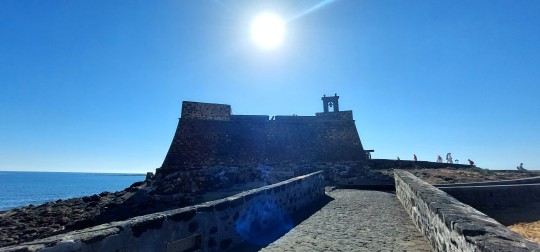
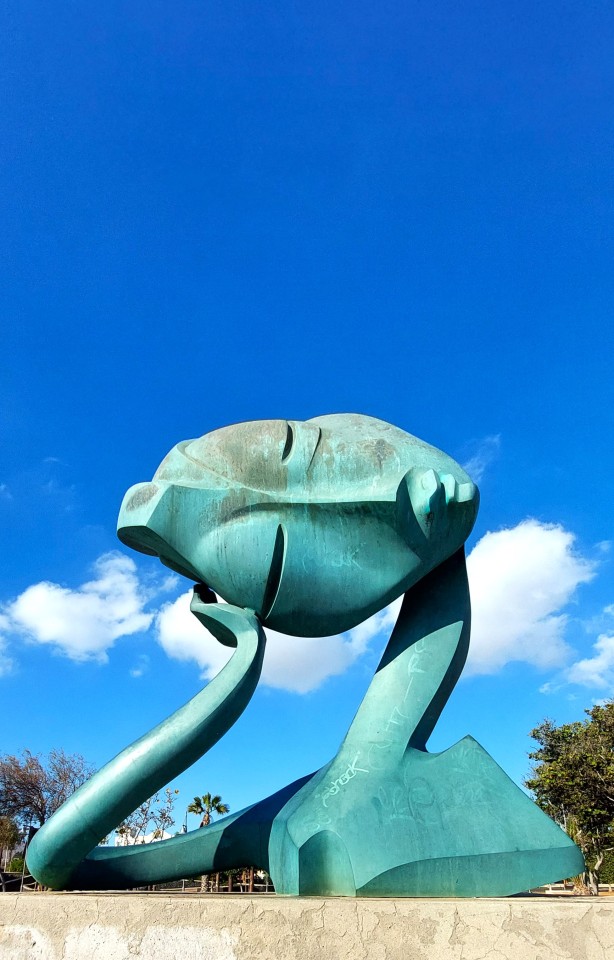
Wundert es, dass sich der umtriebige Herr Architekt nicht nur Freunde gemacht hat? Seine Künstlerkollegen wurden von der Übermacht des Maestros erdrückt, und auch die Immobiliensachverständigen formierten sich mit der Zeit gegen Manrique, stand der doch bei beinahe jedem zweitem Bauprojekt auf der Bremse – und die Inselregierung folgte ihm. Keinesfalls wollte er zulassen, dass seine geliebte Insel am Altar des Massentourismus geopfert wird. Die ästhetische und ökonomische Integrität Lanzarotes ging ihm über alles. Die mächtigen Geister die er dabei zu Hilfe rief, wurde er bald schon nicht mehr los und je kostbarer die Insel wurde, desto mehr boomte sie auf den internationalen Ferienbörsen. Je exklusiver, desto begehrter. Immer mehr Menschen wollten teilhaben an den Gossip-Geschichten der bunten Illustrierten über das Insel-Lotterleben des Meisters. Die Anzahl der Übernachtungen explodierte, sanfter Tourismus hin oder her.
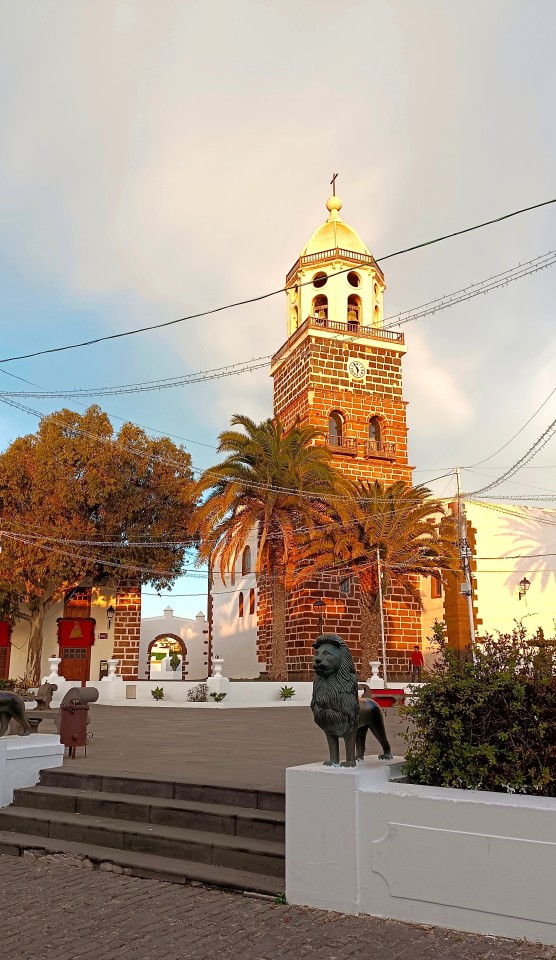
Teguise, Plaza de la Constitución
Der Unfalltod Manriques am 25. September 1992 erschütterte die Insel nachhaltig, von den internationalen Klatschspalten ganz zu schweigen. Sogar das Ende war an Theatralik nicht zu überbieten: Mit seinem Jaguar raste der Inselkaiser auf eine Kreuzung zu, unmittelbar darauf wurde er von einem schweren Geländewagen „abgeschossen“. Schenkt man der Insel-Fama Glauben, schlug die Bau-Mafia zu. Sogar sein Tod bewirkte Erstaunliches: Seither gibt es auf Lanzarote keine Überlandkreuzungen mehr, sie wurden in Kreisverkehre umgewandelt, in deren Mitte zumeist große Mobiles aus des Märtyrers Hand stehen, die sich in die verschiedensten Windrichtungen drehen und wenden. Symbolträchtiger wurde wohl noch keinem Künstler gedacht.

Villa LagOmar
Die Sehenswürdigkeiten der Insel-Mitte:
César Manrique Fondacion – Das erste Wohnhaus Manriques ist als Museum begehbar. Wer wissen will, was Geschmack bedeutet, muss dorthin.
Arrecive – Hafen und Hauptstadt. Weit mehr als nur Meer-Promenade, Castillo San Gabriel, Islote de Femina und Castillo de San José (inkl. Kunstmuseum)
Teguise – Zauberhafte, ehemalige Inselhauptstadt mit prächtigem Hauptplatz vor der „Iglesia de Nuestra Señora de Guadalupe“, in der eine Christusfigur mit Langhaarperücke schwebt und eine Büste des spanischen Literatur-Nobelpreisträgers steht („Durch seine Gedanken kann der Mensch die Wahrheit entdecken, die verborgen in der Welt umgeht“)
San Bartolomé – Besuchenswerte Stadt in der geografischen Mitte Lanzarotes. Vor dem Rathaus und der Pfarrkirche fühlt man sich um Jahrhunderte zurückversetzt.
Tao – hier und rundum in den Nachbarorten finden die populären Ringkämpfe der Giganten, den „Luchadores“ statt, z.B. in der Arena „Lucha Canaria“ statt. Keinesfalls versäumen!
Villa LagOmar in Nazaret - „Dr. Schiwago“ Omar Sharif kaufte die Traumvilla und verspielte sie noch am selben Abend beim Bridge. Nicht nachahmens- aber empfehlenswert.
El Jable, alttestamentarisch anmutende Sandwüste beim Örtchen Soo.
Die Wunderwelt der spektakulären Gesteinsformationen „Las Grietas“ in den Montana Blanco ist Lanzarotes Antwort auf den „Grand Canyon“ Arizonas.
Surf-Süchtige müssen zum Wind- und Wellenparadies „Caleta de Famara“.
Der „Playa de Matagorda“ ist die Touri-Einflugschneise: Düsenjets zum Anfassen!
El Jable, die Sandwüste – Las Grietas – Stratified City – Caleta de Famara:
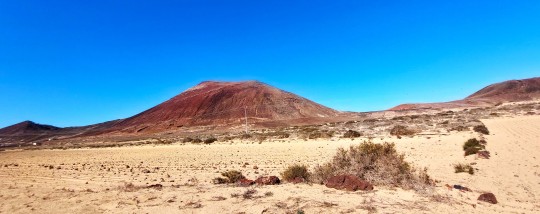

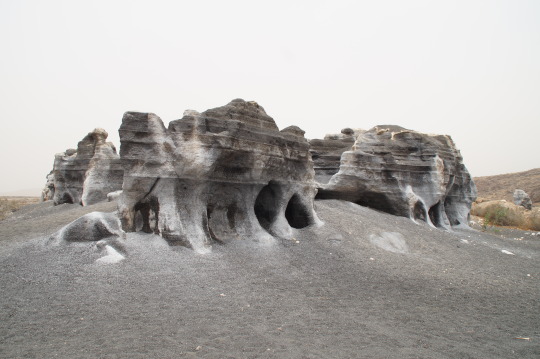

#michael schottenberg#schotti#schotti unterwegs#schotti to go#orf#spanien#kanarische inseln#kanaren#lanzarote#arrecife#césar manrique#fundacion manrique#casa manrique#camilo josé cela#villa lagomar
2 notes
·
View notes
Text

Desde mi ventana. Junio 23
#alcarria#paisajes#óleo#guadalajara#otro viaje a la alcarria#naturaleza#camilo josé cela#campo#Peñalagos#Entrepeñas#Spotify
3 notes
·
View notes
Text
The Hive by Camilo José Cela, translated by James Womack
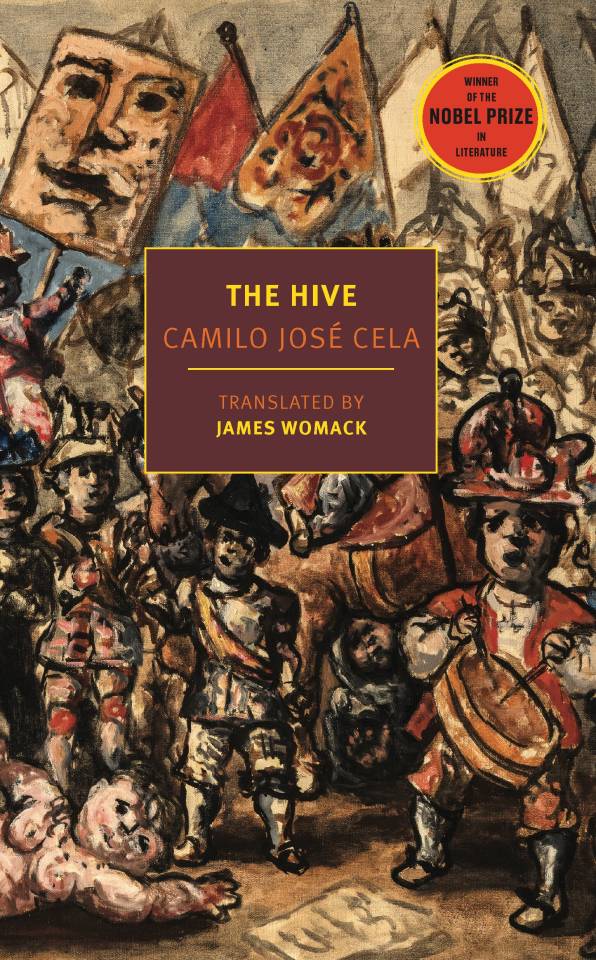
At the moment he hears his name being called [Martín] is thinking, “Yes, Byron was right: if I ever have a son I’ll make sure he goes into some prosaic job: lawyer or pirate.” (pp. 80-81)
***
The night closes, at about half past one or two o'clock in the morning, around the city's strange heart.
Thousands of men sleep in their wives' arms without thinking of the hard, cruel day that may await them, crouched like a mountain cat, in just a very few hours.
Hundreds, many hundreds of bachelors surrender to the solitary vice: intimate, sublime, and ever so very delicate.
And a few dozen women wait—my God, what do they wait for? Why are they so deceived?—with their minds full of golden dreams . . . (p. 192)
***
In [Don Francisco’s] house, back in the interior room, Doña Soledad, his wife, is darning socks and allowing her mind to wander: a lumbering imagination she has, flustered and motherly as a chicken in flight. Doña Soledad is not happy: she put her whole life into her children, but her children have not known how, or have not wanted, to make her happy. She had eleven children, and all eleven survived, almost all of them now far away, one or two lost completely. The two oldest children, Soledad and Piedad, became nuns a long time ago, when Primo de Rivera fell; a few months ago, reaching out from the convent, they dragged in María Auxiliadora, one of the younger kids, to join them there as well. The oldest of the two boys, Francisco, the third child, was always the apple of his mother's eye: he's a military doctor in Carabanchel now and comes home every now and then to stay the night. Amparo and Asunción are the only ones who have got married. Amparo married her father's assistant, Don Emilio Rodríguez Ronda, and Asunción married Don Fadrique Méndez, who's a surgeon's assistant in Guadalajara, a hardworking and skillful man who can just as easily put his hand to a broken leg as to a hernia, who can give a child an injection or administer an enema to an old society lady, who can fix a radio or mend a punctured rubber bag. Amparo, poor thing, has no children and can't have them now; she's always been sickly, always having turns; she had a miscarriage first of all and then a whole series of collapses of various kinds, and then they ended up taking out her ovaries and everything else that had been causing her trouble, which must have been a lot. Asunción, on the other hand, is stronger than her sister and has three children who are absolute darlings: Pilarín, Fadrique, and Saturnino; the oldest one, the girl, is at school already: she's just turned five years old.
The next one down the list in Don Francisco and Doña Soledad's family is Trini, a spinster, quite ugly, who borrowed money and started a haberdasher's in the Calle de Apodaca.
It's a small shop, but it's clean and well looked after. It's got a tiny shop window filled with skeins of wool, children's clothes, and silk stockings, and its name painted in light blue: large pointy letters reading "Trini" and then underneath, smaller, "Haberdasher's." There's a guy who lives in the area who's a poet and who looks on the young woman with deep tenderness; in vain he tries to explain things to his family over lunch.
"You don't see it, but these little shops, all these lonely people, called Trini... they fill me with such nostalgia."
"The kid's an idiot," his father says. "When I die I have no idea what's going to happen to him."
The neighborhood poet is a longhaired young man, pale, always distracted, never noticing anything in order not to miss out on his inspiration, which is something like a butterfly, deaf and blind but brimming with light, a butterfly that floats about haphazardly, sometimes beating against the walls, sometimes flying higher than the stars. The neighborhood poet has two roses in his cheeks. The neighborhood poet, sometimes, when he's caught up in a fine frenzy of composition, faints in cafés and needs to be taken through to the bathroom, where he comes round under the scent of disinfectant, the block of disinfectant in its little wire cage like a cricket.
After Trini there's Nati, the woman who studied with Martín, a woman who dresses very well, perhaps a little too well, and then theres María Auxiliadora, the one who went off to become a nun with her big sisters a little while back. And to round out the family are three catastrophes: the three youngest children. Socorrito ran off with a friend of her brother Paco, Bartolomé Anguera, a painter; they live a bohemian existence in a studio on the Calle de los Caños, where they must freeze to death half the time, where they'll wake up one morning frozen into lollipops. The girl tells all her friends that she is happy, that all she wants to do is be at Bartolomé's side, helping him with his Work. She says "Work" with a heavy emphasis on the Capital letter, an emphasis that makes her sound like she's on the jury selecting art for national exhibitions.
"They don't have any standards in the national exhibitions," Socorrito says. "They don't have the first clue about what they're on about, But it doesn't matter, sooner or later they'll have no choice but to give Bartolomé a medal."
There were serious ructions in the house when Socorrito eloped.
“If only she'd managed to get out of Madrid!" her brother Paco said, who had a firm geographical sense of honor.
The other remaining daughter, María Angustias, said shortly after all this that she wanted to become a singer and changed her name to Carmen del Oro. She also thought about going for Rosario Giralda or Esperanza de Granada, but a friend of hers, a journalist, said that no, the most suitable name was Carmen del Oro. This was the stage she was at when, without giving her mother a chance to recover from the whole Socorrito business, María Angustias upped and ran off with a banker from Murcia called Don Estanislao Ramírez. Her poor mother was so shocked she didn't even cry.
The youngest, Juan Ramón, is a bit funny, a bit "yon way," and spends all day long looking at himself in the mirror and putting creams on his face.
Round about seven o'clock, in a break between two patients, Don Francisco goes out to make a phone call. It's almost impossible to hear what he says.
"Are you going to be at home?"
“. . .”
"Right, I'll be round at about nine."
“. . .”
"No, don't call anyone.” (pp. 206-08)
0 notes
Text

Camilo José de Cela y Trulock
4 notes
·
View notes
Text
Book List: Aesthetics, Neuroaesthetics, & Philosophy of Art
Why Science Needs Art: From Historical to Modern Day Perspectives 1st Edition by Richard Roche (Author), Sean Commins (Author), Francesca Farina (Author)
Feeling Beauty: The Neuroscience of Aesthetic Experience by G. Gabrielle Starr (Author)
An Introduction to Neuroaesthetics: The Neuroscientific Approach to Aesthetic Experience, Artistic Creativity and Arts Appreciation 1st Edition by Jon O. Lauring (Editor)
Brain, Beauty, and Art: Essays Bringing Neuroaesthetics into Focus by Anjan Chatterjee (Editor), Eileen Cardilo (Editor)
Philosophy of Art: A Contemporary Introduction (Routledge Contemporary Introductions to Philosophy) by Noël Carroll (Author)
Philosophy of the Arts: An Introduction to Aesthetics 3rd Edition, by Gordon Graham (Author)
The Oxford Handbook of Aesthetics (Oxford Handbooks) Revised ed. Edition by Jerrold Levinson (Editor)
Aesthetics and the Philosophy of Art: The Analytic Tradition, An Anthology (Blackwell Philosophy Anthologies) 2nd Edition, by Peter Lamarque (Editor), Stein Haugom Olsen (Editor)
What Art Is by Arthur C. Danto (Author)
After the End of Art: Contemporary Art and the Pale of History - Updated Edition (Princeton Classics Book 10) by Arthur C. Danto (Author), Lydia Goehr (Foreword)
Ways of Seeing: Based on the BBC Television Series (Penguin Books for Art) by John Berger (Author)
Art and Its Significance: An Anthology of Aesthetic Theory, Third Edition 3rd Revised ed. Edition, by Stephen David Ross (Editor)
But Is It Art?: An Introduction to Art Theory by Cynthia Freeland (Author)
The Art Question by Nigel Warburton (Author)
Arguing About Art: Contemporary Philosophical Debates (Arguing About Philosophy) 3rd Edition by Alex Neill (Editor), Aaron Ridley (Editor)
Art Theory: A Very Short Introduction (Very Short Introductions) by Cynthia Freeland (Author)
Aesthetics: A Very Short Introduction (Very Short Introductions) Illustrated Edition, by Bence Nanay (Author)
The Cambridge Handbook of the Psychology of Aesthetics and the Arts (Cambridge Handbooks in Psychology) by Pablo P. L. Tinio (Editor), Jeffrey K. Smith (Editor)
Aesthetics: A Comprehensive Anthology (Blackwell Philosophy Anthologies) 2nd Edition, by Steven M. Cahn (Editor), Stephanie Ross (Editor), Sandra L. Shapshay (Editor)
Philosophies of Art and Beauty: Selected Readings in Aesthetics from Plato to Heidegger by Albert Hofstadter (Author, Editor), Richard Kuhns (Author, Editor)
Art, Aesthetics, and the Brain Illustrated Edition, by Joseph P. Huston (Editor), Marcos Nadal (Editor), Francisco Mora (Editor), Luigi F. Agnati (Editor), Camilo José Cela Conde (Editor)
#study guide#book list#neuroscience#neuroaesthetics#philosophy of art#art philosophy#dark academia#dark academia study guide
22 notes
·
View notes
Note
pio baroja, my beloved
Pío Baroja, my beloved
Miguel Hernández, my beloved
Carmen Laforet, my beloved
Camilo José Cela, my beloved
And so so so many more
Spanish literature is so important and dear to me. I wish I were a better writer so I could tell my empty diary how loved these writers and their books make me feel in my day to day life. I sometimes forget this when I'm questioning my career choices, but then I remember and everything is a little bit better.
💖💖💖💖💖💖💖💖💖💖💖💖💖💖
3 notes
·
View notes
Text




IMAGENES Y DATOS INTERESANTES DEL DIA 19 DE OCTUBRE DE 2023
Día Internacional de la Lucha contra el Cáncer de Mama, Día Internacional de las Catedrales, Día de la Resolución de Conflictos, Semana Mundial de la Novela, Año Internacional del Mijo y Año Internacional del Diálogo como Garantía de Paz.
Santa Publia / Pudenciana.
Tal día como hoy en el año 1469: Se casan Isabel I de Castilla y Fernando II de Aragón, conocidos como Los Reyes Católicos (título que les atribuyó el papa Alejandro VI), en el Palacio de los Vivero, en Valladolid (España). Lo que supuso la unificación de los reinos de Castilla y Aragón.
En 1868: Nace la peseta en España como unidad monetaria, por decreto del Gobierno Provisional tras el derrocamiento de Isabel II.
En 1900: El físico Max Planck descubre la ley espectral de la radiación del cuerpo negro (ley de Planck), en su propia casa de Grunewald, cerca de Berlín (Alemania).
En 1943: Un joven microbiólogo con 20 años llamado Albert Schatz descubre la estreptomicina, un antibiótico que ayudará a combatir la tuberculosis, pero será su jefe, Selman Waksman, quien se apropiará del descubrimiento y aunque tras la demanda del alumno y acuerdo de compartir el descubrimiento obtendrá el Premio Nobel de Medicina de 1952.
En 1950: El Ejército Popular de Liberación de China ocupa la ciudad de Qamdo, dentro del movimiento que se conocerá como la invasión del Tíbet.
En 1987: Sucede el Lunes Negro en la bolsa de Nueva York, el índice Dow Jones pierde más de 500 puntos, en la que la peor caída desde el crack de 1929.
En 1989: El escritor español Camilo José Cela obtiene el premio Nobel de Literatura.
En 1989: En la Central nuclear de Vandellós I (España) , ocurre un incendio que ocasiona malfuncionamiento en la refrigeración del reactor y que, según los expertos, estuvo muy cerca de fundir el combustible nuclear y ocasionar un desastre.
En 2005: Comienza el primer proceso contra Sadam Husein y siete coacusados, en Irak.
3 notes
·
View notes
Photo
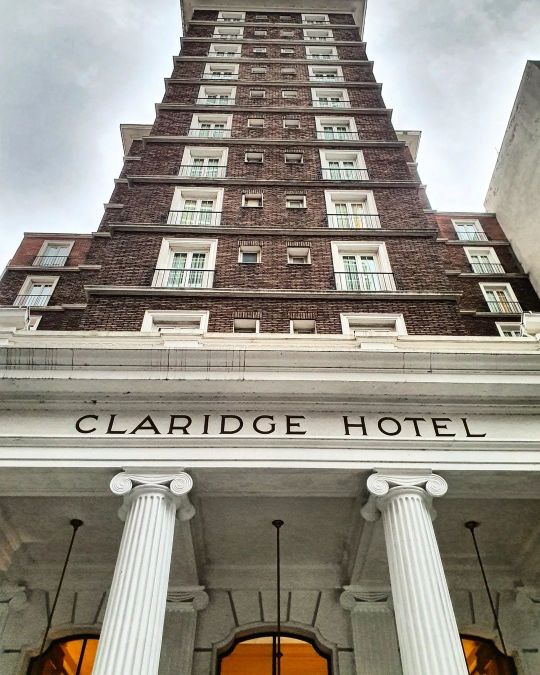
Hotel Claridge, Microcentro [ San Nicolás ] Buenos Aires, Argentina. . . El Hotel Claridge fue encargado a Dubourg por los hermanos Felipe y Ottocar Rosarios. Fue construido por la empresa A. y F. Israel y Cía., se inauguró el 2 de agosto de 1946 y se transformó rápidamente en una de las opciones de categoría de Buenos Aires. Entre sus huéspedes han estado diversas personalidades, como Alain Delon, César Milstein, Montserrat Caballé, Aga Khan, Umberto Eco, el Dalái lama, Alessandra Ferri, Camilo José Cela, Steffi Graf, Martina Navratilova, Arantxa Sánchez Vicario, Birgit Nilsson, Conchita Martínez, Clémentine Renaudin, Mary Joe Fernández, Björn Borg, Jimmy Connors, John McEnroe y Yannick Noah. En 1992, el arquitecto José María Peña, director del Buenos Aires Museo, otorgó al Claridge el título de "Testimonio vivo de la memoria ciudadana"; y denominó a Tucumán entre Florida y San Martín como la "Cuadra del Claridge". En abril de 2001 se terminó, en un plazo de 65 días, la reforma interior de varios ambientes del hotel, a cargo del diseñador Andrés Rosarios. De hecho, la familia Rosarios continuó siendo propietaria y administradora del Claridge durante décadas, hasta que finalmente el grupo español Hotusa compró el 75% del hotel en 2006, integrándolo a la cadena Eurostars Hotels [ Fuente: Wikipedia ] . . 📷: @ferraribsas . . #likebuenosaires #ig_buenosaires #igersoftheday #igers_argentina #loves_united_life #ig_argentina #argentina_estrella #argentina_greatshots #argentina_ig #loves_united_argentina #loves_united_southamerica #asi_es_argentina #total_argentina #loves_buenosaires #loves_argentina #great_captures_argentina #buenosairesoftheday #argentina_illife #buenosairesve #wow_america #bairesgrams #fotosdebuenosaires #igersargentina #argentina #buenosaires #mimiradaporteña #visto_en_buenosaires #streetphotography (en Claridge Hotel) https://www.instagram.com/p/CmCfj-vv9Dh/?igshid=NGJjMDIxMWI=
#likebuenosaires#ig_buenosaires#igersoftheday#igers_argentina#loves_united_life#ig_argentina#argentina_estrella#argentina_greatshots#argentina_ig#loves_united_argentina#loves_united_southamerica#asi_es_argentina#total_argentina#loves_buenosaires#loves_argentina#great_captures_argentina#buenosairesoftheday#argentina_illife#buenosairesve#wow_america#bairesgrams#fotosdebuenosaires#igersargentina#argentina#buenosaires#mimiradaporteña#visto_en_buenosaires#streetphotography
11 notes
·
View notes
Text
EL PORQUE DEL CALZÓN NEGRO
.
Aquí va una pequeña muestra de la picardía dicha en prosa y rima, sin una sola grosería, es de admirar el ingenio y que siendo algo complicado, no incluya palabra obscena:
Salió una anciana del baño,
Su viejito la miraba
Y al punto le preguntaba:
“De dónde es el gusto extraño".
Pues ya llevas varios años
Usando ropa interior
De oscuro y serio color,
Y ya mi vista se aburre,
¿Qué acaso no se te ocurre?
¿Qué eso te da más calor?
La viejita indiferente
caminando paso a paso
Levanta en su mano un vaso y allí sumerge los dientes.
Al viejo mira de frente para darle explicación.
Se acomoda en el colchón y guarda una breve pausa,
Aquí te digo la causa
De lo negro del calzón.
Muchos colores usé,
Pues la carne firme estaba,
El fuego que me quemaba
Contigo lo disfruté.
Hace tiempo lo apagué.
Por no hacerlo disoluto,
te fui fiel en lo absoluto.
Lo que te digo es muy cierto:
Cuando el pájaro está muerto,
El nido viste de luto. 💕
José Camilo Cela
Premio Nobel de Literatura.
5MinutosdeReflexionypensamiento

7 notes
·
View notes
Text


La colmena, Camilo José Cela
2 notes
·
View notes
Text
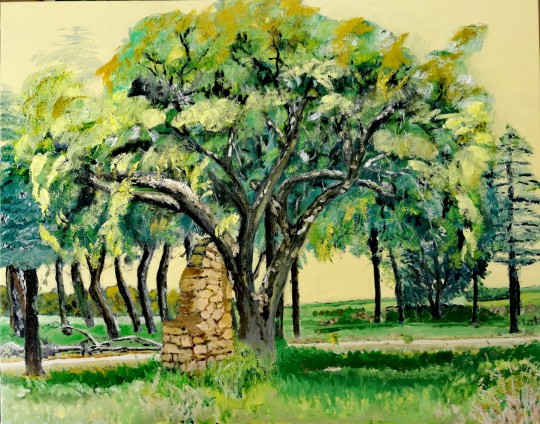
Casi casi... Vamos que poco lo falta para terminarlo
#alcarria#paisajes#guadalajara#óleo#otro viaje a la alcarria#naturaleza#camilo josé cela#Brihuega#Encina#Finca#Lavanda
6 notes
·
View notes
Text


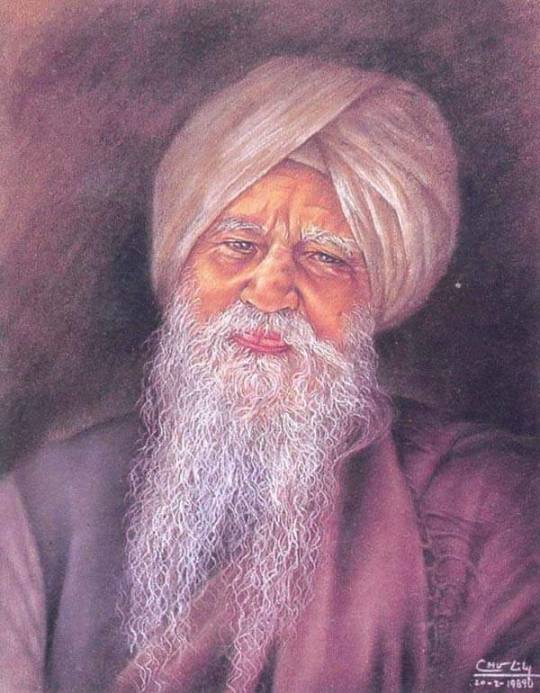
3 piece of art works from My good friend and great teacher of fine art in Taiwan. A contemporary female artist - Chu Lily (朱麗麗) who is active in Spain and China too, she once lived and taught art in Spain. I adore her. She is also one of my clients of my leather fine crafts. 😉 Lan~*
▪︎ Artist:朱麗麗 Chu Lily, Taiwanese
El Titulo: 新潮女人/ Las mujeres modernas, 2020
Tecnica : 彩墨混合技法/ Técnica mixta con tinta china
79 x 110 cm
📌 這幅畫作現在歸屬我的西班牙摯友 Fernando de Saavedra 所收藏,SEK 教育機構校長和 Camilo José Cela 大學校長(以西班牙獲諾貝爾獎大文豪名子 Camilo José Cela 命名,西班牙辦學卓越的知名大學)
Esta obra hice en el año pasado, el año 2020, ahora pertenece la mano de mi gran y más querido amigo español Fernando de Saavedra, El Director de Gabinete de Presidencia de la Institución Educativa SEK y del rectorado de la Universidad Camilo José Cela. (text by artist - Chu Lily 朱麗麗)
▪︎ Artist:朱麗麗 Chu Lily, Taiwanese
Title : 素人藝術家 林淵 畫像, 1992.
粉彩畫50 x 65 .cm
▪︎ Artist:朱麗麗 Chu Lily, Taiwanese
Title:印度聖憎 RATASOAMI, 1989.
粉彩畫 50 x 65 .cm
收藏者/collector:印度富豪 RATASOAMI 弟子
5 notes
·
View notes
Text

../... Poco antes de llegar a Guadalajara (el tren), la gente carga con sus bultos y se agolpa en las plataformas y en los pasillos. El viajero baja el último; lo que tiene que hacer, se hace lo mismo un cuarto de hora antes que después. También se puede dejar sin hacer; no pasa nada.
Viaje a la Alcarria
Camilo José Cela
5 notes
·
View notes
